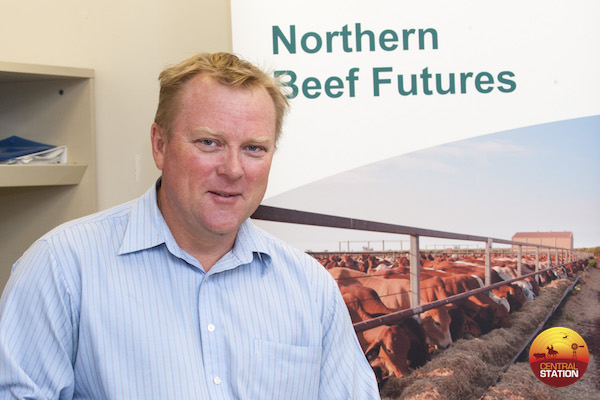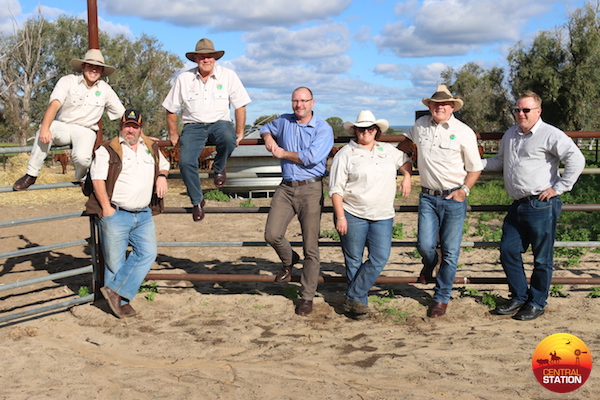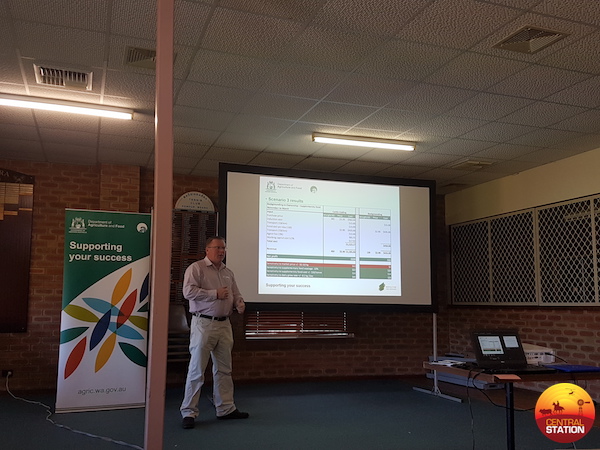Backgrounding beef – an analyst’s perspective
Host: Northern Beef Futures
Written by Roger Verbrugge – Market Analyst, Northern Beef Futures Project.
 Department of Agriculture and Food market analyst Roger Verbrugge.
Department of Agriculture and Food market analyst Roger Verbrugge.
My name is Roger Verbrugge and I work for the Department of Agriculture and Food as a Market Analyst for the Northern Beef Futures project.
I previously worked as a corporate accountant and this role is a return to the beef industry for me after growing up on a beef cattle property and running my own herd in the South West of Western Australia.
I have recently been working on a backgrounding model for the project integrating north south opportunities for the industry.
‘Backgrounding’ is a term used for a stage post weaning where animals can be ‘value-added’, by growing them to a heavier weight and higher condition score. It is the process of grouping, growing, and acclimatising animals in preparation for a particular purpose or market.
In Western Australia, the Northern rangelands and Agricultural region production systems can be complementary. The mustering season in the Northern rangelands coincides with the Agricultural region growing season from May to November.
Backgrounding could be employed as a business model to accumulate and deliver consistent specification of cattle for a diverse range of live export markets, in addition to the domestic feedlot and slaughter market.
New and emerging markets for WA cattle have different supply chain demands and delivery time. For example, the current live cattle export protocol for slaughter cattle to China requires cattle to be processed within 14 days of delivery and feeder cattle to be slaughtered within 90 days. In order to maintain the profitability of a processing facility in China, a regular, year round supply of slaughter and feeder cattle at a consistent specification is required.
 Roger (far right) with some of the team from Mingnew Irwin Group backgrounding project.
Roger (far right) with some of the team from Mingnew Irwin Group backgrounding project.
For northern producers, backgrounding in WA’s Agricultural region improves marketing and finishing opportunities, providing improved access to live export markets, and provides opportunities for grain producers in the south of the State to feedlot cattle for entry into southern domestic processors. Southern backgrounding systems can reduce environmental risk of drought in the Northern rangelands by providing access to finishing systems in alternative geographical locations.
DAFWA’s Northern Beef Futures project is developing tools to enable pastoralists and backgrounders to better understand the cost and margin relationship of each industry segment. These prefeasibility tools can be used to assess southern agricultural backgrounding options, northern irrigation options, northern aggregation, and feedlot options.
 Roger Verbrugge presenting at a backgrounding working with the West Midlands Group.
Roger Verbrugge presenting at a backgrounding working with the West Midlands Group.
I have been working with local grower groups including the West Midlands Group and the Mingenew Irwin Group to develop the backgrounding model and there is great interest from producers.
You can read more about backgrounding on the Department of Agriculture and Food website
The Department of Agriculture and Food’s $15 million Northern Beef Futures (NBF) project is an investment by the State Government’s Royalties for Regions program.
